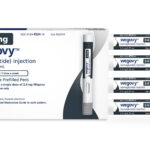Novo Nordisk Invests $60 Million in Valo Health for AI-Powered Drug Discovery

Novo Nordisk, the Danish pharmaceutical company, has invested $60 million in a collaboration with Valo Health, a US-based startup, to harness Valo Health’s artificial intelligence-powered drug discovery engine in the quest to discover new therapies for cardiometabolic diseases. This partnership reflects the pharmaceutical industry’s growing reliance on artificial intelligence (AI) to enhance drug discovery and development efforts.
Valo Health’s Opal platform, stemming from technology initially launched by Numerate, offers unique capabilities in AI-based drug discovery. It predicts various characteristics not typically addressed by other AI systems, including pharmacokinetics, ADME (absorption, distribution, metabolism, and excretion), toxicity, and the functional effects of compounds. Additionally, Opal incorporates “real-world” human data and human tissue modeling technology, which, when combined, accelerates the discovery and development process. Valo Health acquired Numerate shortly after its launch in 2020 and expanded its capabilities by acquiring stem cell company Tara Biosystems and protein therapeutics specialist Courier Therapeutics.
As part of this collaboration, Novo Nordisk secures a license to three preclinical-stage cardiovascular disease programs from Valo Health in exchange for its initial $60 million investment. The partnership has the potential to expand to encompass 11 candidate programs. The total value of the agreement is estimated at $2.7 billion, inclusive of research and development (R&D) funding and potential milestone payments.
Notably, this partnership follows Valo Health’s strategic collaboration with contract research organization (CRO) Charles River Laboratories (CRL), which combines the Opal platform with CRL’s capabilities in drug discovery and development.
In their joint efforts, Novo Nordisk and Valo Health are poised to utilize Opal’s capabilities to predict compound safety and efficacy, and there is potential for this collaboration to extend to activities covering the entire drug discovery continuum.
Dr. Marcus Schindler, Chief Scientific Officer at Novo Nordisk, highlighted the potential of artificial intelligence and machine learning in drug discovery and development, emphasizing the importance of leveraging human datasets early in the process to gain a better understanding of target biology. He commended Valo Health’s approach of utilizing these technologies on real-world human data to generate new insights and translate them into potential therapeutics.
The pharmaceutical industry has seen a surge in AI-based drug discovery strategic alliances, with partnerships continually emerging to bolster drugmakers’ computer-aided drug design (CADD) capabilities. This trend underscores the industry’s commitment to harnessing AI’s potential in advancing drug research and development.
Valo Health is not only involved in collaborations but is also advancing its own drug candidates through development. Among its leading candidates is OPL-0401, a small-molecule ROCK 1/2 inhibitor currently in Phase 2 testing for non-proliferative diabetic retinopathy. This exemplifies the company’s commitment to delivering innovative therapies through the application of AI and data-driven approaches.





